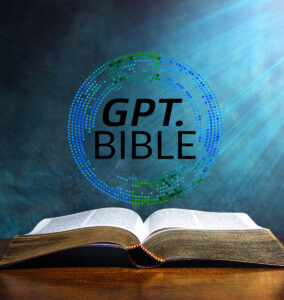Overview of Scholarship Attesting to Matthew’s dependence on Luke
Several Key Scholars who have lent support to Matthean Posteriority are summarized. This includes Gottlob Christian Storr, Johann Gottfried Herder, Christian Gottlob Wilke, Gustav Schlager, William Lockton, Ernst von Dobschutz, H. Philip West Jr., Ronald V. Huggins, Evan Powell, Martin Hengel, George A. Blair, Alan J.P. Garrow, James R. Edwards surveyed in Robert MacEwen book Matthean Posteriority: An Exploration of Matthew’s Use of Mark and Luke as a Solution to the Synoptic Problem, (London : Bloomsburry T & T Clark (2015))
Gottlob Christian Storr (1746-1805) appears to be the first modern scholar advocating Matthean Posteriority, resulting from his attempts to harmonize the Gospels. His conclusion was that Mark and Luke preserve an accurate chronological order of events, but that Matthew gives a more thematic arrangement which suggested that Matthews was later than the other two Gospels (Ibid, p. 7)
Christian Gottlob Wilke (1786-1854) argued that Matthew wrote third and used both Mark and Luke and puts his arguments for Matthew’s use of Luke under four headings:

- Matthew’s Gospel has seams that show that Matthew oriented his double tradition (DT) material on the basis of Luke. (Double tradition (DT) is material with parallels (or close parallels) only in two Gospels, usually Matthew and Luke)
- Matthew gives evidence of having changed double tradition (DT) material as a result of moving it from its more original Lukan contexts
- Matthew uses words that are characteristic of Luke
- Double tradition (DT) material reveals its Lukan origins through the evidence it contains of Luke’s redactional interests
Wilke also suggested that the author of Matthew used Mark as his template, supplementing it with material from Luke. (Ibid., p. 8)
Gustav Schlager attempts to demonstrate Matthew’s dependence on Luke on the basis of vocabulary and expressions characteristic of Luke that are found in both Matthew and Luke in their parallel passages. Schalager believed that his examples in double tradition (DT) passages and in minor agreements of Matthew and Luke against Mark—of Matthew agreeing with Luke in using characteristically Lukan language prove that Matthew used Luke’s Gospel as a source. (Ibid, p. 9)
In the 1920’s William Lockton in ‘The Origin of the Gospels‘ gave the following reasons for viewing Matthew as the last Synoptic Gospel to have been written:
- Differences in the Synoptic Gospels are often best explained by an order of development in traditions that goes from Luke to Mark to Matthew (W Lockton, The Three Traditions of the Gospels (London: Longmans, Green, 1926) pp. 3-4, 32-7; The Origin of the Gospels, CQR 94 (July 1922), p. 222)
- Matthew appears to have the most developed and artificial structure of the three Synoptics (Lockton, The Three Traditions of the Gospels, pp. 3-4, 32-7)
- Matthew’s and Luke’s Infancy Narratives contain such ‘considerable agreement that they ‘can scarcely be independent’ (Lockton, ‘Resurrection and other Gospel Narratives‘, pp. 131-3)
- The vocabulary of the double tradition (DT) is more characteristic of Luke than of Matthew, suggesting to him that Luke was Matthew’s source for his material. (W. Lockton, ‘The Origin of the Gospels‘, CQR 94 (July 1922) p. 222)
While many who have advocated Matthean Posteriority maintain the popular view of Marcan priority, that is Mark also preceded Luke, others such Lockton and the Jerusalem School affirm Lukan priority over Mark. Lockton is the predecessor of Robert Lindsey and his followers of the Jerusalem school. Lindsey argued for Lukan priority, as covered in the article Lukan Priority and the Jerusalem School.
Ernost von Dobschutz (1870-1934) argues that Matthew depended on Luke ‘at least in a secondary way’. He believes that Matthew’s use of Luke is more likely than the reverse because Matthew generally seems more developed than Luke in the double tradition (DT) in terms of arrangement and expansions of the material and the constriction of the discourses. (Ernst von Dobschutx, ‘Matthew as Rabbi and Catechist’ in The interpretation of Matthew (ed. Graham Stanton; SNTI; Edinburgh; T&T Clark, 2nd edn, 1995), pp. 34-6)
Dobschutz also saw historical grounds for dating Matthew later than Mark and Luke: Matthew’s rabbinical and catechetical style indicates that his Gospel was ‘a catholicizing type’ of a document (like James, the Pastoral Epistles, and the Shepherd of Hermas) and therefore should be dated to ‘about A.D. 100’. (Ibid p.37)
H. Philip West Jr., in 1967 published an article in the New Testament Studies journal, ‘A primitive Version of Luke in the Composition of Matthew‘. He built on the theory of John Knox that both Marcion’s Gospel and canonical Luke were dependent on an earlier Gospel that was ‘roughly equivalent to ‘Marcion’s Gospel. West argues that this ‘Primitive Luke’ was also a source for the Gospel of Matthew. In West’s hypothesis, Primitive Luke essentially takes over the role of Q in the two-document hypothesis. (Philip West, ‘A primitive version of Luke in the Composition of Matthew‘, NTS v14.1, (1967) p 75; p, 77 Fig. 2)
Ronald V Huggins in Matthean Posteriority argues Matthew made use of both Mark and Luke, and no hypothetical intermediary documents are needed. (Huggins, Matthean Posteriority, pp. 204-6). Proponents of the two-document hypothesis claim that because Matthew and Luke fail to place double tradition (DT) material at the same points in their Markan outlines, this proves that they are independent of each other. Huggins affirms that this is much less a problem for Matthean Posteriority than it is for Lukan Posteriority (i.e., the Farrer hypothesis). He argues that Matthew’s general procedure was to use Mark as his primary source and Luke as his secondary source- supplementing Mark with blocks of material drawn from Luke. (Ibid, pp. 212-13)
Evan Powell advocated for Matthean Posteriority in two books on the Gospels, including The Unfinished Gospel, Notes on the Quest for the Historical Jesus (1994), and The Myth of the Lost Gospel (2006). Based on Matthew being the most developed of the Synoptic Gospels, he claims it is likely to be chronologically posterior to the other two. He observes that we can see Matthew making the same kinds of changes to Luke in the double tradition that he makes to Mark in the triple tradition. Powell argues that the high level of verbatim agreement between Matthew and Luke in the double tradition can be explained by Matthew conservatively copying from Luke in a way that is consistent with the way Matthew handles Mark. (Powell, The Myth of the Lost Gospel, p. 50; pp. 107-20)
Alan J. P. Garrow, in the article Matthew’s Dependence (Biblica Vol.86, No.3 (2005)), lays out a case for his hypothesis that Matthew used Mark, Luke, and an unspecified form of ‘Q’. Garrow makes these key observations:
- The generally high degree of word-for-word agreement between Matthew and Luke in the double tradition, similar to the agreement between Matthew and Mark, is best explained by Matthew’s direct use of Luke
- Matthew’s complex scribal operations are explained by Matthew having possessed the Gospels of Mark and Luke in codex form, making it easier to rearrange his sources’ orders of material than if he had accessed them in scroll form.
Summary of Works of Key Matthean Posteriorists
MacEwen summarizes the works of adherents to Matthean Posteriority as follows
Storr was apparently the first to propound a theory that Matthew was written in dependence on Mark and Luke; his observation that Matthew’s thematic arrangement made his Gospel look more developed than Mark’s and Luke’s was a significant insight. Herder argued for the lateness of the Canonical Gospel of Matthew relative to Mark and Luke while emphasizing the role of oral tradition… Wilke defended Matthean posteriority as a simple ‘utilization hypothesis’ involving direct literary relationships between the Synoptics. His observation that Matthew’s Sermon on the Mount appears more developed and heterogeneous than Luke’s Sermon on the Plain, has been taken up by most of his successors. Schlager defended Matthean posteriority using an argument based on the characteristic vocabulary of Luke found also in Matthew in the DT [double tradition]… Lockton pointed out that Matthew’s Gospel as a whole has the most developed and artificial structure of the Synoptics and showed that Matthew’s and Luke’s Infancy Narratives have more in common with each other than is generally recognized. Dobschutz defended the MPH [Matthew Posteriority Hypothesis] in terms of the Infancy Narratives, the MAs [minor agreements], and the historical considerations. West argued persuasively that Matthew’s omission of Lukan Sondergut [sayings only in Luke] is explainable on the basis of Matthew’s redactional tendencies and that Matthew, in composing his major discourses, used Lukan material consistently with the way he used Markan material. Huggins, at the end of the twentieth century, reintroduced Matthean posteriority as an option, providing the theory with a memorable name and giving a credible account of Matthew’s procedure in using Mark as his primary source and Luke as his secondary source. Powell argued that an MPH view of Matthew’s consistency in conservatively copying from both Mark and Luke is more reasonable than the 2DH [two-document hypothesis] view of Luke conservatively copying passages while taking great liberties with Mark. Hengel offered a generally plausible account of historical factors affecting the development of the Synoptic Gospels and took a mediating position between the MPH and the 2DH – suggesting that Matthew depended on Luke but also that the two Gospels could have had other sources in common in addition to Mark. Blair, looking at Matthew as an editor of his sources, defended Matthean posteriority in every Synoptic pericope having parallels. Garrow succinctly and persuasively showed how the MPH can explain the key data of the Synoptic Gospels. Edwards argued for the posteriority of canonical Matthew while also taking seriously the testimony of the church fathers that the earliest Gospel was one written in Hebrew by the Apostle Matthew.
(Robert MacEwen, Matthean Posteriority: An Exploration of Matthew’s Use of Mark and Luke as a Solution to the Synoptic Problem, (London : Bloomsburry T & T Clark (2015) pp. 24-5)
Robert MacEwen provides further contributions in demonstrating Matthean Posteriority in his book Matthean Posteriority: An Exploration of Matthew’s Use of Mark and Luke as a Solution to the Synoptic Problem (London : Bloomsburry T & T Clark, 2015). MacEwen begins the book with a survey of the scholars who have defended various forms of the MPH (Matthean Posteriority Hypothesis). Chapter 2 discusses two key lines of evidence that support Matthean Posteriority. The first line of evidence is deep textual analysis demonstrating that Matthew could have known the contents of Luke’s Gospel beyond merely the double tradition material. The second line of evidence involves a study of strings of verbatim agreements in the Gospels, The results support the view that Matthew depended directly on Luke.
On page 26, MacEwen summarizes the strongest of the arguments in favor of the hypothesis that Matthew depends on Luke as follows:
- There is a higher degree of verbal agreement found between Matthew and Mark and Matthew and Luke in contrast to that found between Mark and Luke
- Matthew’s arrangement of the DT (double tradition) material if he were using Luke is easier to explain than Luke’s arrangement if he were using Matthew
- Matthew appears generally more developed than either Mark or Luke
- Matthew’s redactional tendencies can explain his omissions of Luke’s Sondergut (sayings which are only found in Luke)
- Historical factors (e.g. Hengel’s argument that Matthew reflects a somewhat later period in the first century than does Luke)
- The infancy and resurrection narratives contain evidence of Matthew’s knowledge of Luke’s accounts
- Characteristic vocabulary, which is reversible

